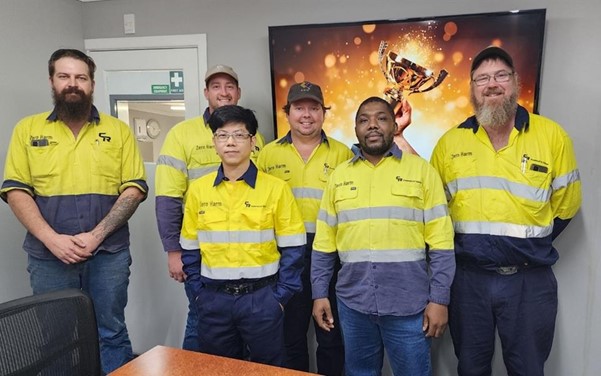Reclassification of ferrous slag drives process efficiency and sustainability
The CR Powered by Epiroc foundry in Maryborough, Queensland, received the 2024 Epiroc Environmental Award for its initiative to reclassify ferrous slag, a byproduct of its melting operations, as a reusable resource.
This outcome represents a significant step toward integrating circular economy principles within heavy industry.
Ferrous slag is produced during the melting and alloying of steel and iron in electric arc furnaces. As part of this process, fluxes are added to facilitate the removal of impurities from molten metal. These impurities, combined with flux materials, solidify into slag. The resulting material is typically rich in oxides of iron, calcium, silica, alumina, magnesium and other compounds. While often viewed as a waste product, ferrous slag has well-documented potential as a supplementary construction material, particularly in road base, concrete aggregate, and soil stabilisation.
Historically, the slag produced at the Maryborough foundry facility was classified as regulated industrial waste and transported to landfill. Recognising the potential to improve both environmental outcomes and operational efficiency, the team undertook a technical investigation to evaluate opportunities for reclassification under Queensland’s End of Waste (EOW) Code.

The award-winning team at the CR Powered by Epiroc foundry in Maryborough, Queensland.
This involved comprehensive material characterisation, including chemical composition analysis, leachability testing, and assessments of mechanical properties. Test results confirmed the slag posed no significant risk of environmental contamination when applied in controlled uses and demonstrated comparable physical performance to traditional quarried materials.
Using this data, the facility team collaborated with Queensland’s Department of Environment, Science and Innovation to prepare and submit a reclassification proposal. The application outlined the material’s beneficial reuse potential, proposed end uses, and compliance with environmental guidelines.
Approval was granted in late 2024, formally allowing the slag to be reused in specified industrial applications. The reclassification has had immediate operational and environmental benefits. The foundry now diverts approximately 477 tonnes of slag per year from landfill. In addition to reducing the site’s environmental footprint, the initiative is projected to deliver cost savings by significantly reducing disposal fees through beneficial reuse and may also create revenue opportunities when the byproduct gains strong market acceptance.
“This project demonstrates how rigorous technical evaluation, and regulatory engagement can convert a legacy waste stream into a sustainable resource,” said Joakim von Bothmer, Head of Group SHEQ at Epiroc. “It exemplifies how circular economy principles can be practically applied in foundry operations to reduce environmental impact and improve process efficiency.”
“Beyond its immediate impact at Maryborough, the project sets a precedent for other Australian industrial sites managing similar byproducts. The team has established a replicable framework encompassing technical validation and regulatory pathways that can inform similar initiatives nationally."
